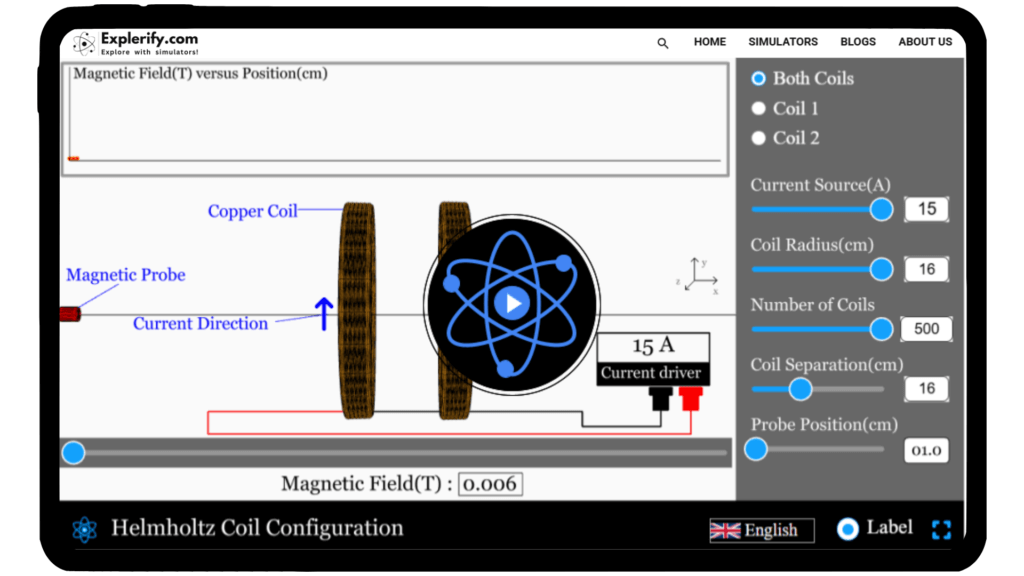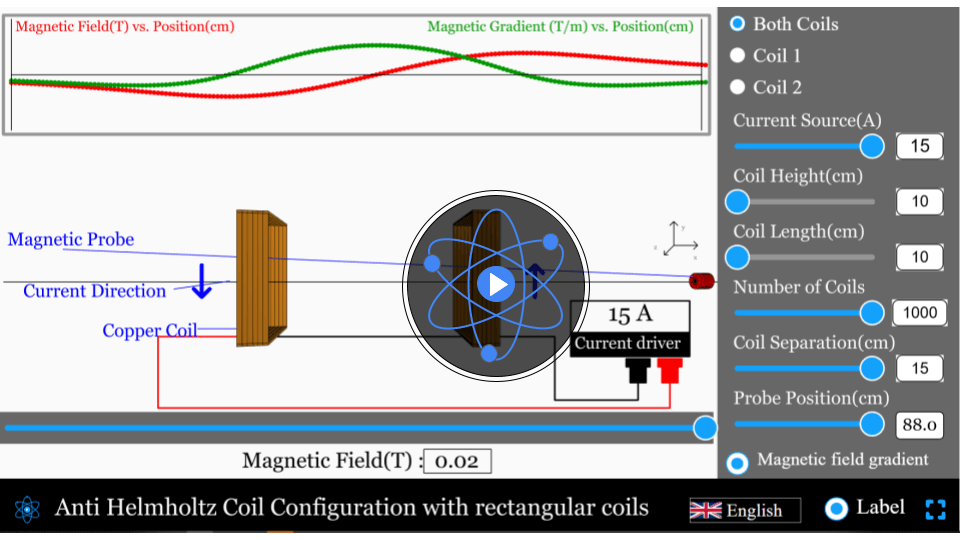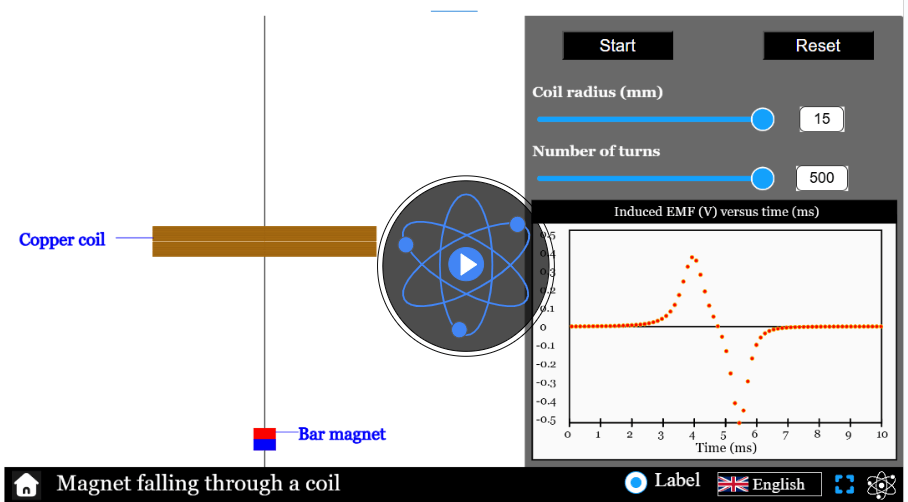Helmholtz coil simulator
Visualize and experiment with the magnetic field at the center of a pair of coils in a Helmholtz configuration using our interactive simulator.
Helmholtz coil
Curious about how uniform magnetic fields are generated or how they are utilized in scientific research and practical applications? Discover the intriguing world of electromagnetism with our Helmholtz Coil Simulator! This interactive tool is designed to help you understand and visualize the creation and behavior of uniform magnetic fields using Helmholtz coils. Experiment with the controls, change variables, and see how they affect the overall magnetic field. Dive in and start simulating now!
Pro tip: you will witness uniform magnetic field when the separation between two coils is equal to the radius of the coils
Mathematical description
The formula for the magnetic field B at the center of a Helmholtz coil is given by:
Where:
- \( B \) is the magnetic field at the center (in tesla, T)
- \( \mu_0 \) is the permeability of free space (\( 4\pi \times 10^{-7} \) T·m/A)
- \( n \) is the number of turns in each coil
- \( I \) is the current through the coils (in amperes, A)
- \( R \) is the radius of each coil (in meters, m)
- \( d \) is the distance between the two coils (in meters, m)
Tutorial video
Take a quick spin through our simulator!
FAQs on Helmholtz Coil
Qus 1. What is a Helmholtz coil used for?
Helmholtz coils are used to generate a uniform magnetic field, essential for calibrating instruments, conducting scientific experiments, and testing electronic devices. Their precise field control makes them invaluable in research and development. The uniformity of magnetic field generated by Helmholtz coil ensures accurate and repeatable results, making it ideal for scientific and industrial uses.
Qus 2. How does a Helmholtz coil work?
A Helmholtz coil consists of two identical circular coils spaced apart by a distance equal to their radius. When current flows through both coils in the same direction, it produces a nearly uniform magnetic field in the region between them.
Qus 3. How do you calculate the magnetic field inside a Helmholtz coil?
The magnetic field at the center of a Helmholtz coil can be calculated using the formula , where is the permeability of free space, is the number of turns per coil, is the current, and is the radius of the coils.
Qus 4. How do a Helmholtz coil setup produce uniform magnetic field lines?
Think of the “Helmholtz coil” setup as a combination of two solenoids. For the combination of these two solenoids to produce uniform magnetic field, two conditions need to be met.
- These two solenoids are placed closed to each other at a distance equal to their radius length.
- Current flowing in them is in same directions. his means that if one coil has a current flowing clockwise, the other coil also has a current flowing clockwise (or both counterclockwise).
Now after these two conditions are met, we will witness magnetic field superimposition of the magnetic fields generated by these two solenoids.
- Field Overlap: The magnetic fields from each coil overlap in the region between the coils. Because the coils are identical and the currents flow in the same direction, the magnetic fields add constructively in the central region.
- Uniformity: The result of this constructive interference is a highly uniform magnetic field in the central region between the coils. The field strength and direction are consistent across this central area.
Qus 5. What materials are Helmholtz coils typically made of?
Helmholtz coils are usually made of copper wire wound on a non-magnetic frame. Copper is chosen for its excellent electrical conductivity, which ensures efficient current flow and consistent magnetic field generation.
Qus 6. What are some common applications of Helmholtz coils?
Helmholtz coils are commonly used in applications such as magnetic field calibration, scientific research, magnetic resonance imaging (MRI) calibration, and testing electronic components for magnetic interference.
Qus 7. What is an anti-Helmholtz coil?
An anti-Helmholtz coil consists of two identical coils placed apart, similar to Helmholtz coils, but with currents flowing in opposite directions. This configuration creates a magnetic field that decreases linearly between the coils, making it useful for creating magnetic field gradients.




